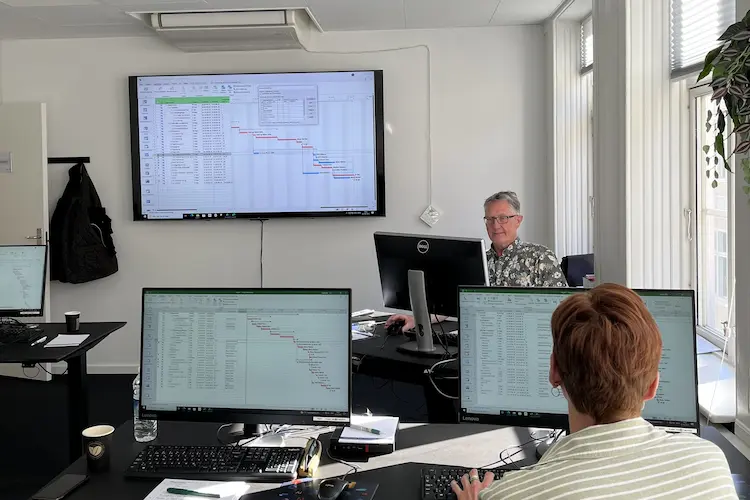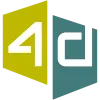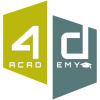You will learn
SQL queries (Transact-SQL) provides you with many possibilities for extracting and manipulating data. We will teach you all the basic SQL enabling you, after the course, to create your own solutions which include using the SQL language. The course is also relevant for you if you are using SQL in Excel - either in Power Queries, Power Pivot, VBA codes or in other tools.
On the course, you will learn to
- Select and manipulate data
- Sort data and filter data
- Use the built-in functions in the SQL language
- Create groups of data
- Create Sub Queries
- Select data from multiple tables by using joins
In the section, ”Course Details” below, you will find more details about the content of this SQL course.
You get
Before the course
- The opportunity to speak with one of our instructors about finding the right course for you
During the course
- Teaching by the most experienced instructor team in our cozy and fully updated classrooms located in the center of Copenhagen.
- A course that consists of a both theory and practical exercises. We know the importance of having practical exercises and hands-on is always in focus during the courses.
- A course material you can use as an encyclopedia after the course and downloads of course exercises.
- All meals, which includes breakfast, fresh coffee, tea, fruit, soft drinks, lunch in an Italian restaurant on Gråbrødretorv, cake, candy and off cause Wi-Fi to your devices.
- A course certificate as a proof of your new skills
After the course
- Access to our free hotline service, which means that you up to a year after the completing of the course can contact us if you have questions regarding subjects from the course.
- We have a unique satisfaction guarantee in order to ensure you the complete benefit from the course
Get the best benefit from the course
This SQL course is a part of 4D's unique collection of English conducted courses in the Business Intelligence course category.
Course Details
In this module, you will be introduced to basic theories about designing relational databases and to some history about RMDB and SQL language.
The following will be covered:
- Basic database design
- Primary keys and foreign keys
- What is SQL?
Here you will be introduced to the SELECT statement and learn how to perform simple querys in a relational database.
The following will be covered:
- Use the SELECT statement
- Retrieve all columns and retrieve individual columns
- Sort data and sort data by using multiple keys
In this module, you will learn to filter selected data.
The following will be covered:
- The WHERE clause
- Formulas in a WHERE clause
- The use of IN – NOT - BETWEEN
In this module, you will be introduced to filtering by using patterns.
The following will be covered:
- Special filter characters using Like: %, ?, _
Here you will be introduced to how to create calculated columns. You will also see some of the most commonly used Functions() in SQL. You will learn some of the more specific T-SQL-functions() and be given a list of all the available T-SQL functions. You will also learn to work with alias for tables and columns.
The following will be covered:
- What is a field? - Concatenation of fields
- Using alias
- Calculations
- What is a function? - using functions
We will introduce you to a special group of functions: The aggregate-functions, which are functions used to calculate per column in a group of data.
The following will be covered:
- Aggregate functions - SUM, MAX, MIN, AVG
- Using aggregate functions
- Grouping data
- Filtering groups
In this module, you will learn about subqueries which, on one hand, can be very complex but on the other hand also extremely useful. You will after this module be able to use subqueries as a filter and to use subqueries as embedded in calculations.
The following will be covered:
- What is a subquery?
- Filtering by using subqueries
- Correlated embedded subqueries
Here you shall work with normalized data and relational data you will learn how to use joins. We will explain the different types of joins and how they are used.
The following will be covered:
- Join
- What are combined queries?
- Inner join and outer join
- Joins and aggregations
In this module, you will get a short introduction to inserting and updating data in a database, by using SQL statements.
The following will be covered:
- INSERT INTO – UPDATE - DELETE
Hvad siger vores kunder om os?
Siden 1990 har 4D Academy hjulpet virksomheder og specialister med at omsætte viden til målbare resultater. Vores kursister belønner os med en gennemsnitlig rating på 4,8 ud af 5 på Trustpilot, Google og Facebook, og det gør os stolte.
Se hvorfor både nye og erfarne fagfolk vælger os, når de vil løfte deres kompetencer.
Hold dig opdateret med vores nyhedsbrev
Her bor vi
1201 København K
1201 København K
Tirsdag: 08.00 - 16.00
Onsdag: 08.00 - 16.00
Torsdag: 08.00 - 16.00
Fredag: 08.00 - 16.00





